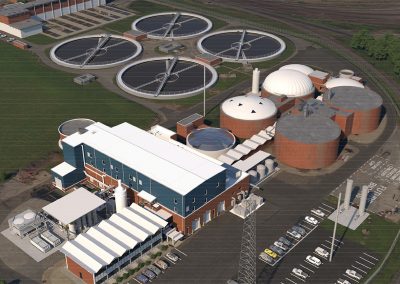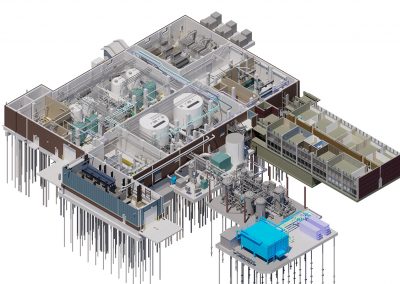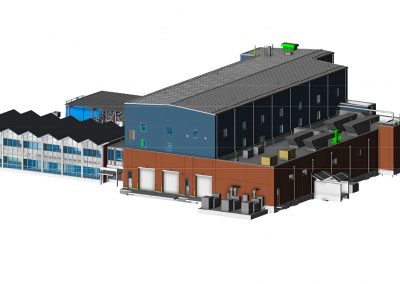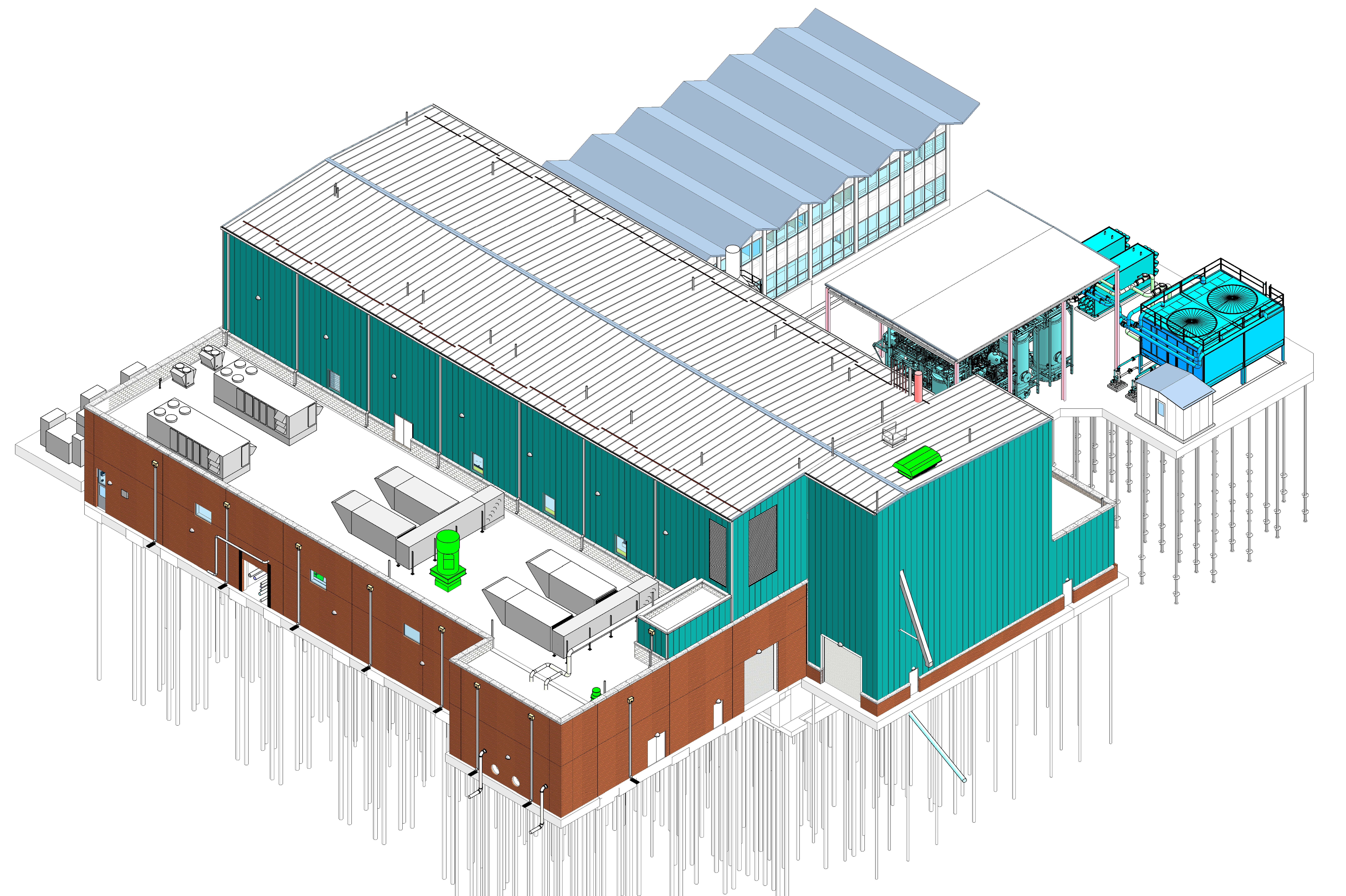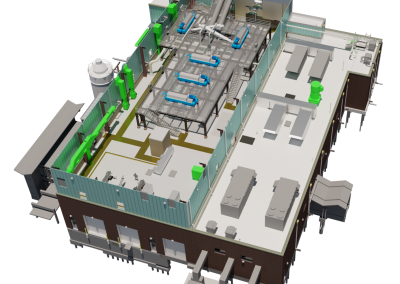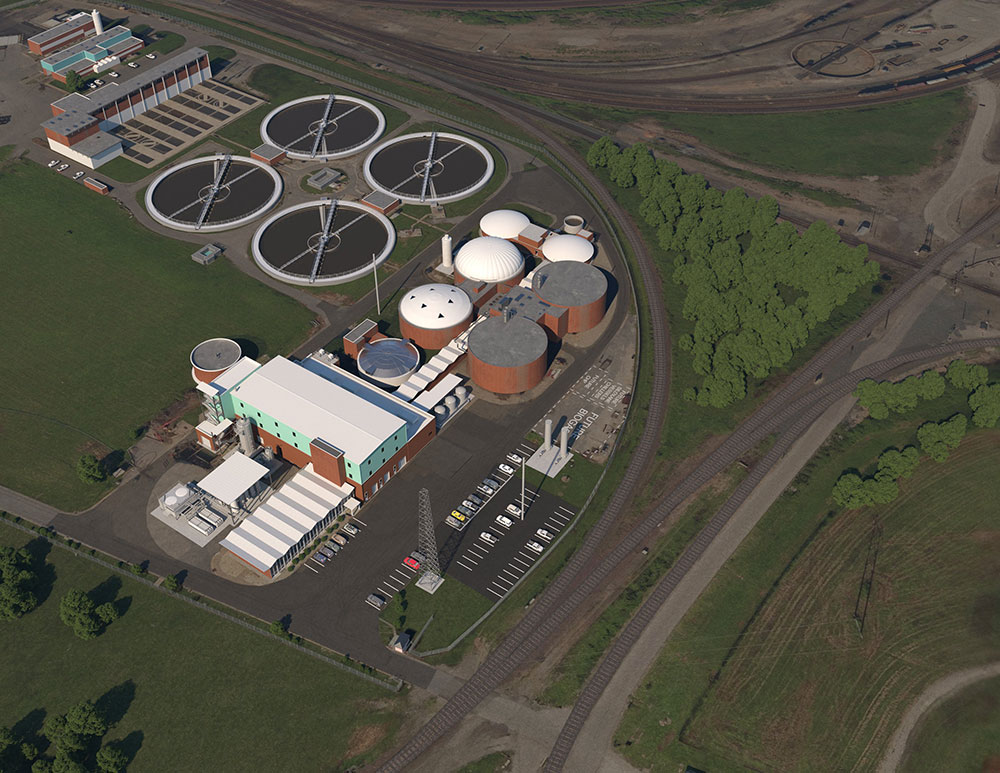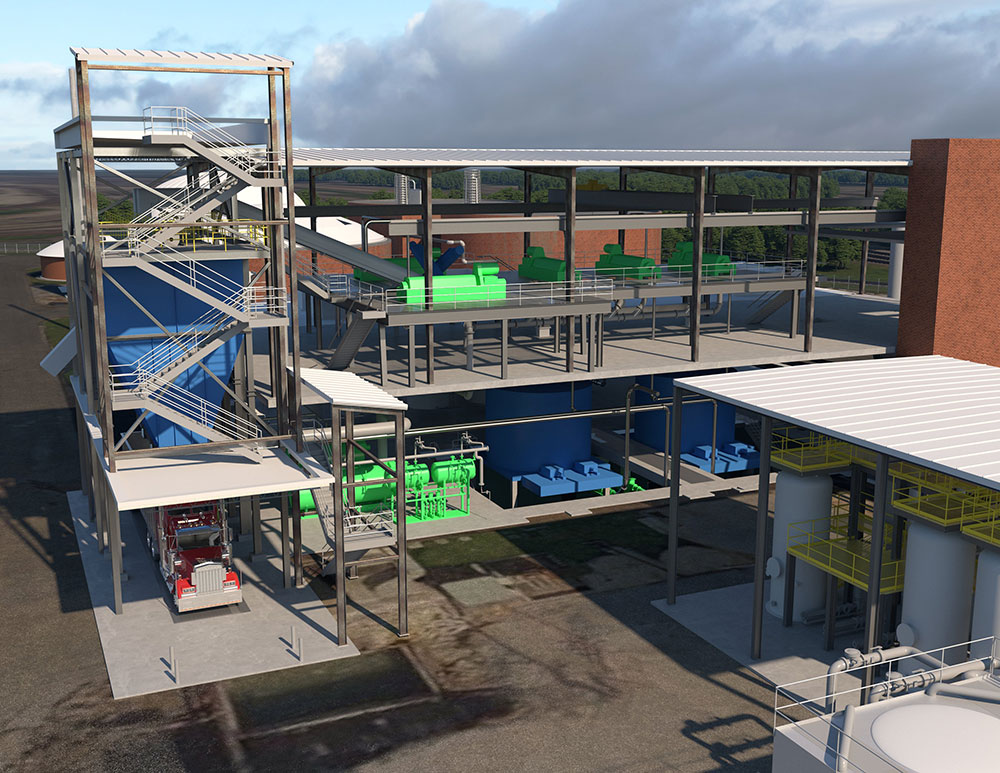Blue River Wastewater Treatment Plant
KC Water’s Blue River Wastewater Treatment Plant is undergoing a makeover. Once reconstructed, the facility will be renamed the Blue River Biosolids Facility. It will be the first plant of its kind in the Midwest to employ a Thermal Hydrolysis Process (THP) to recycle human and domestic waste into useful energy sources – biosolids and biogas.
- The Blue River Wastewater Treatment Plant, located at 7300 Hawthorne near I-435 and Front Street, is Kansas City’s largest wastewater treatment plant.
- On an average day, the facility treats close to 75 million gallons of wastewater.
- Approximately 98 percent of the solid material in Kansas City’s wastewater is processed and cleaned at the Blue River Plant.
Project Plans
The current Blue River Wastewater Treatment Plant opened as a primary treatment facility in the early 1960’s and underwent an upgrade in 1987. Since that time, new processes and technologies have been added to provide advanced wastewater treatment.
The plant currently utilizes aging and increasingly unreliable infrastructure to dispose of solid waste called sludge, collected from wastewater. The existing system receives sludge from three other wastewater treatment plants in Kansas City, that is then processed and burned in incinerators before it is disposed of in landfills.
Since upgrades are necessary at this time, KC Water has carefully studied the current system and available replacement options, and determined that the best economic and earth-friendly investment for Kansas City is to use a Thermal Hydrolysis Process (THP).
KC Water will do away with the aging incinerators that would cost approximately $60 million to replace, and instead install a two-step pressure cooker process that prepares sludge for efficient anaerobic digestion. The anaerobic digestion step recycles the sludge and allows it to be processed into useful biosolids and biogas. These natural products can be used to produce electrical power, heat, or feed into natural gas pipelines.
How does the Thermal Hydrolysis Process Work?
-
- Waste solids that are determined to be excess in the system after treatment, are treated under pressure at 329°F to reach the next stage of biological reduction in the solids treatment process.
- The treated waste solids are mixed with bacteria in a process known as anaerobic digestion.
- This results in two safe, usable products – biogas (electrical energy) and biosolids (fertilizer).
Why use the Thermal Hydrolysis Process?
-
- Class A Biosolid Product. The THP will recycle domestic waste into a usable Class A biosolid product, rich in nitrogen, that may be safely applied to farms and gardens.
- Efficiency and Speed. It gets the job done in less time and decreases the amount of storage required.
- Increased Sustainability. This process protects the environment, public health and helps increase the community’s quality of life.The THP system will optimize the use of existing infrastructure, such as digester tanks, while modifying the wastewater treatment plant to be more cost effective to meet the future biosolids treatment needs of the City.
“Biosolids are the nutrient-rich organic materials resulting from the treatment of domestic waste at a wastewater treatment facility. Through biosolids management, solid residue from wastewater treatment is processed to reduce or eliminate pathogens and minimize odors, forming a safe, beneficial agricultural product. Biosolids are carefully monitored and must be used in accordance with regulatory requirements.”
Water Environment Federation
Source: https://www.wef.org/biosolids/

